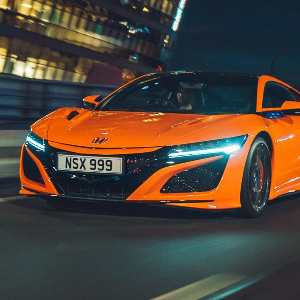
Using the engineering knowhow of Volvo and the deep pockets of Geely, the Polestar 2 is a highly accomplished EV. But is it enough to make the Tesla Model 3 look over its shoulder?
If you’re feeling lonely - or are just one of those people who likes to chat with new people - here’s a tip: buy an electric car. During five days driving the new Polestar 2 every stop at the public chargers invited conversations with fellow EV drivers which all started with: “what’s it like?” (thankfully always from an appropriate three or four metre distance). Nine times out of ten those interested were charging a Tesla, which speaks volumes about where the Polestar 2 is positioned.
Like Teslas it’s fast and, specifically in the case of the Model 3, it doesn’t cost the earth to buy its arresting 4.7 seconds 0-62mph time and genuinely practical range of 292 miles. The standard Polestar 2 comes in at under £50,000 but adding the Performance pack for £5,000 will give you adjustable Ohlins dampers, rock-hard Brembo brakes and 20-inch alloys, and it will lower the car by 5mm.
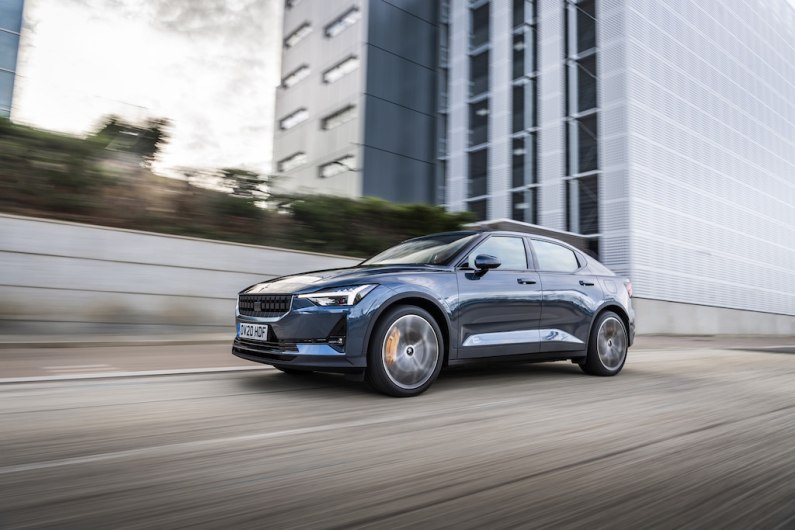
The Polestar 2 is the first of what will be many rivals to the Model 3: a powerful, long-range and incredibly stylish saloon which plugs right into the wall. Incidentally, the Polestar 2 is also built in China, only 376km away from Tesla’s Shanghai gigafactory. Owned by Chinese automotive giant Geely, Polestar is the electric arm of Volvo, which is why it shares its underpinnings with the XC40, and Polestar’s first fully electric car is firing a potent shot at the European EV market (the Polestar 1 is hybrid and costs £140,000, for those wondering).
The big question is, is the Polestar 2 worth choosing over the Tesla Model 3?
Important: in this review we are comparing the Polestar 2 Performance with the Model 3 Performance. The Tesla is only £1,500 more in these configurations. So while these cars are affordable for the range and speeds they can achieve, they aren’t bargain basement.
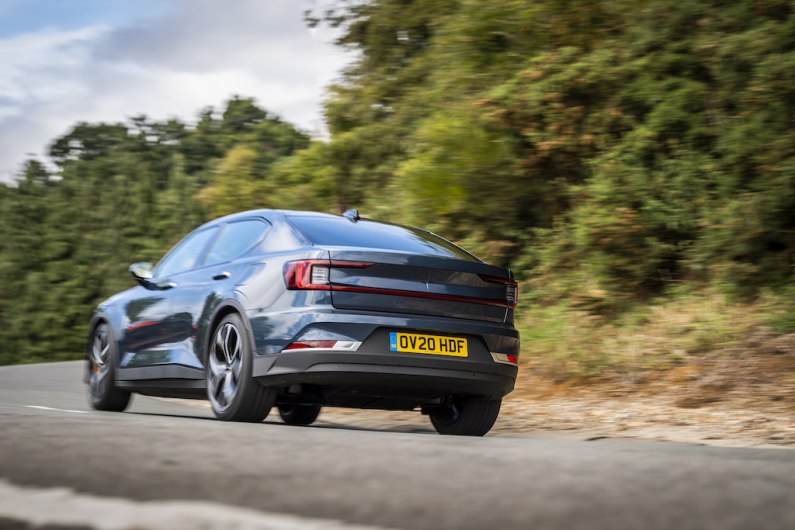
Exterior
We think the Polestar 2 is a thing of absolute beauty and much prefer it to the Model 3’s bulbous dome and squished-looking nose. Of course beauty is in the eye of the beholder, and while many people might think the Model 3 is actually quite the looker, we reckon we’d be hard pressed to find someone to call the Polestar ugly. The dark matrix grille is imposing but at the same time understated, and the boxy silhouette is broken up by muscular creases along the side. The Polestar badges themselves are also dark, blending in against paintwork, which speaks to a mature, grown-up design. Anyone worried it would look more Chinese (Geely) than it does Scandinavian (Volvo) can relax: there are plenty of Scandi design cues, such as the frameless wingmirrors, which make the Polestar 2 standout.
There are six colours to choose from but the overwhelming favourite among customers (26%) is the midnight blue, pictured here. Keeping things simple, much like the car’s design itself, Polestar does not offer trim levels which add various bodywork additions. Instead it’s a case of selecting your exterior colour and your interior upholstery. And that’s it. If you opt for the Performance pack you’ll find the gold Brembo brakes are highlighted beautifully against the midnight blue.
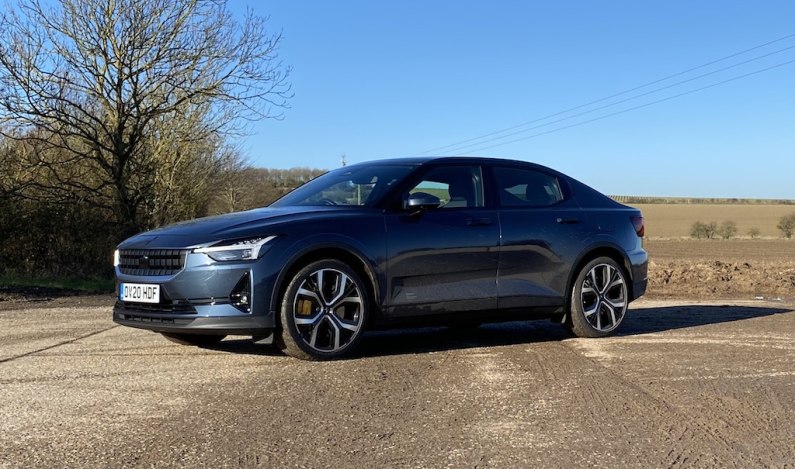
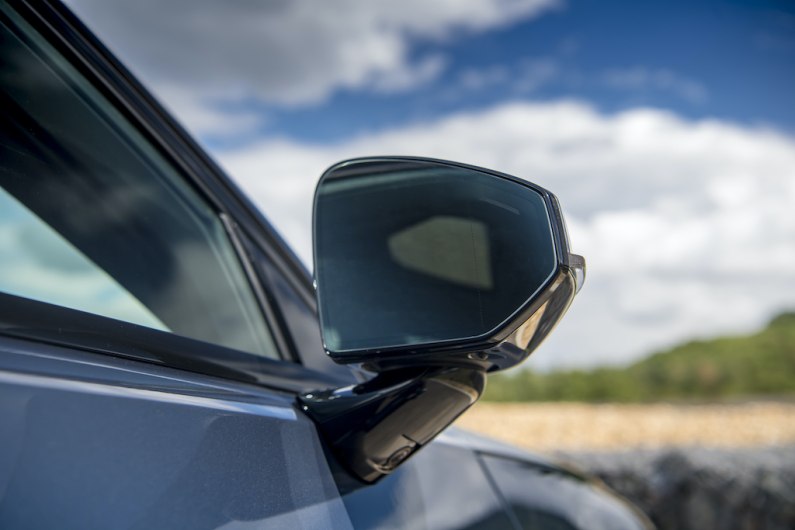
Interior
When it comes to the cabin you have a good idea of the environment you’ll be stepping into by drinking in the exterior: it’s every bit as simple and elegant. Yes, the Model 3 is just as minimalist but it lacks the subtle flair of the Polestar. The Performance Pack adds gold seatbelts which offer a splash of colour against the muted hues of grey and blue, and throughout the Polestar is decked out in materials which make you want to run your fingers over them like a weirdo. There are three interior materials to choose from, two of them fully vegan to reinforce the ecological message of electric cars. For the slate and charcoal options - our car was charcoal - there’s no extra cost. But if you feel better knowing some animals died in the making of your car you can opt for the Nappa leather, adding £4,000 to your bill. Those are some expensive cows.
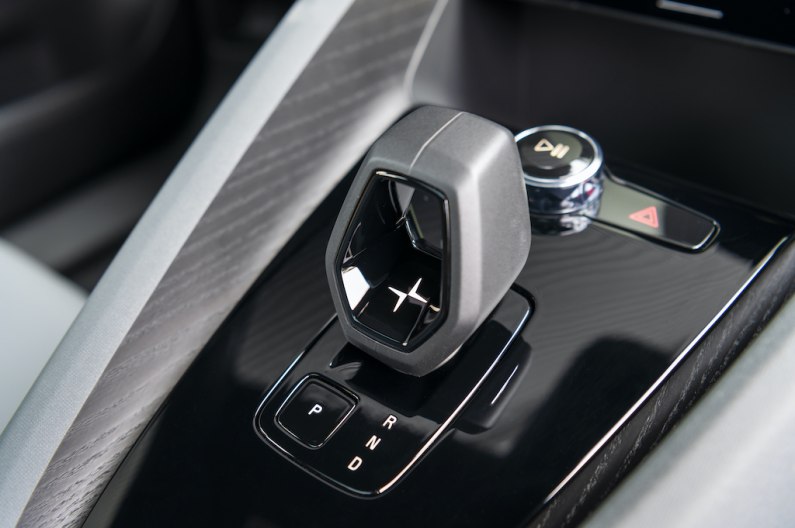
Volvo drivers will immediately notice that much of the switchgear is the same as that found in an XC40, but that’s no bad thing. Just like the Tesla Model 3 the infotainment screen dominates the dash, but in the Polestar it is portrait rather than landscape and sits 11-inches tall compared to the Model 3’s 15.4-inch width. But in the Polestar you also get a 12.3-inch digital instrument display which shows all the crucial information, such as speed, right in front of your eyes, unlike the Tesla which beams everything through the infotainment screen.
Small niggles include the fact our seat position meant the headrest and thick B-pillar aligned in a way which made checking the blind spot tricky. More annoying is the feeling that your forehead will hit the roofline at any second. It doesn’t, quite, it’s more your mind’s eye tricking you thanks to the Polestar 2’s elevated driving position. Perhaps to capture the same advantageous road view of a crossover, in the Polestar 2 you sit higher than you do in your average saloon. It’s a slightly odd feeling and one which takes some getting used to, but it shows Polestar’s ambition is to offer something more well-rounded than simply a battery-powered performance saloon.
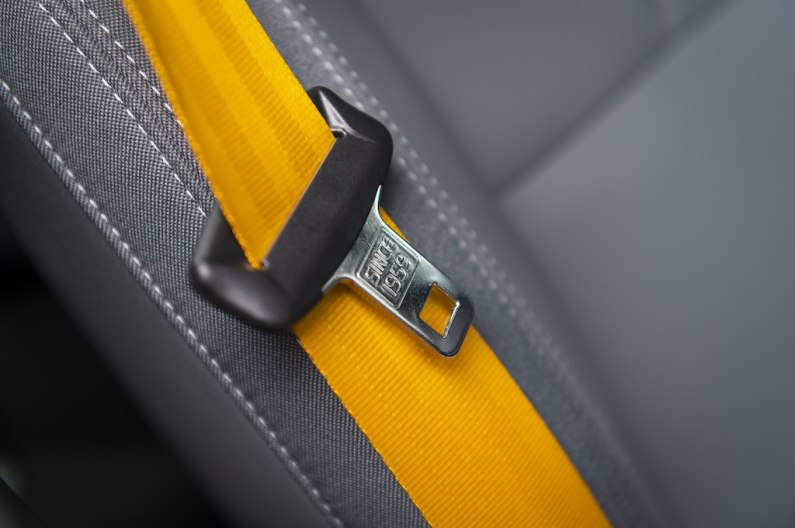
Even if you still prefer the design and layout of the Tesla Model 3 the Polestar 2 beats it resoundingly on build quality. In fact, it beats most cars of this price point on build quality, it’s exceptionally solid and well thought-out. But - and we can go back and forth all day between these two cars - the Model 3 offers more room in the back for passengers and has 20-litres more boot space. Serious considerations for the family market both cars are aimed at.
Technology and equipment
The Polestar’s impressive infotainment system was developed with Google, which is great news if you’re already an Android phone user. If you’re not, we urge you spend a good ten minutes getting used to the way it works (it swipes up from the bottom as well as the top, if you’re struggling to find the climate controls like we were). Polestar says Apple CarPlay will be coming at some point down the line though. While the system looks beautiful, Tesla’s infotainment system offers more functionality, including things like video streaming. And there’s no doubt Tesla still rules the roost when it comes to graphics and slickness. If you haven’t driven a Tesla to compare it to though, you’ll have zero-complaints, and having systems like Google maps instead of the clunky and quick-to-become-dated sat nav systems found in many other car brands is a blessing. The icons are big, therefore easy to locate and press while on the move, which is something many modern infotainment systems fail to take into account. Mind you, most of them aren’t 11-iches tall.
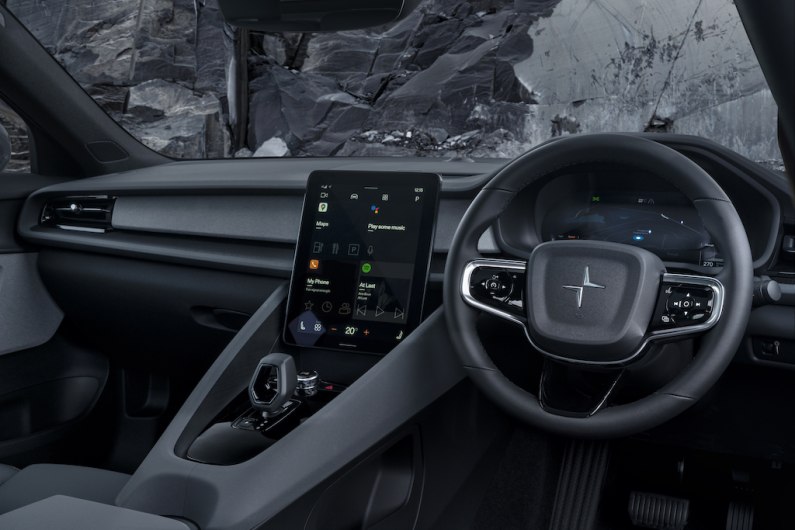
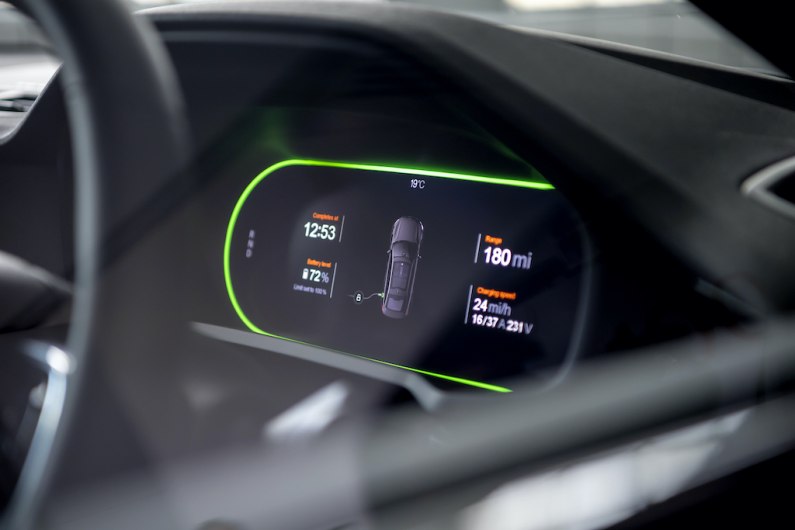
The Polestar’s 360 degree camera is superbly clear and offers the option of zooming into each of the four camera angles for especially tricky spots. We found this very useful while reversing down a country lane littered with rocks and potholes. Standard equipment is impressive, including pixel LEDs, adaptive cruise control, and an air purification system (something which will be especially attractive considering what’s going on in the world right now). And don’t forget this a Volvo underneath – the self-styled safest car brand on earth – so it’s bristling with safety tech. Cross traffic alert with braking support, rear collision warning, driver alert, road sign recognition, lane assist...we could go on and on and it all comes as standard.
On the road
It’s so good to review an EV and not have to nervously check the range an hour into the test drive. Even during the recent snow-blanket, where the thermometer never crept above 2 degrees Celsius mark, the Polestar 2’s range dropped in accordance with the miles we drove except when driven hard. But - and it’s a big but - 292 miles is 60 fewer than the Model 3’s claimed range. While neither cars hit those figures in the real world, the Tesla will get you further per charge, and that’s a big point in the favour of Elon’s machine. The Tesla also has the Polestar beat on acceleration, and quite comfortably too. While the Polestar reaches 62mph in 4.7 seconds, the Model 3 Performance does it in 3.4.
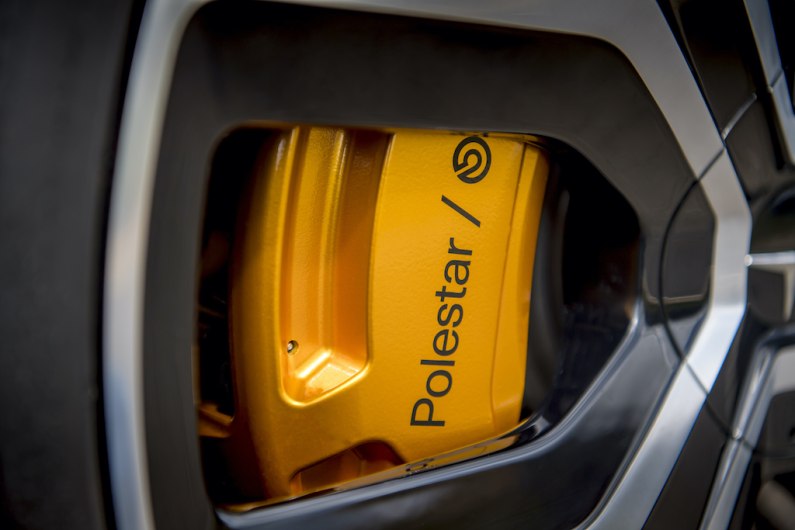
Here’s where it might get controversial though: in many ways the Polestar is more enjoyable to drive. Rather than the neck-snap of the Model 3 the power delivery is urgent but smooth, with its 78kWh battery producing 402bhp and 660Nm of torque, spread across two electric motors, one on each axle. Despite weighing a hefty 2.2 tonnes, most of that lard is housed in the belly of the car, where the battery lives, affording the Polestar 2 a very low centre of gravity which creates a feeling of supreme stability. And the Brembos feel like that could stop an articulated lorry in its tracks, even if they don’t offer bundles of feel.
Damping is on the firm side, but that just adds to nimble nature with which it pushes out of corners. While the dampers are adjustable, they are done so manually, so you’ll need to get busy with the Allen key if you want to soften things off. Apart from a button to slacken the traction control, the Polestar stays well away from the ‘gamification’ of driving, with no modes, no show-off settings. Just prod-and-go power. All of that adds up to a much more grown up and classy car than the Model 3. It’s a Tom Ford aftershave, an Omega watch: style backed by substance but done so without shoving it down people’s throats.
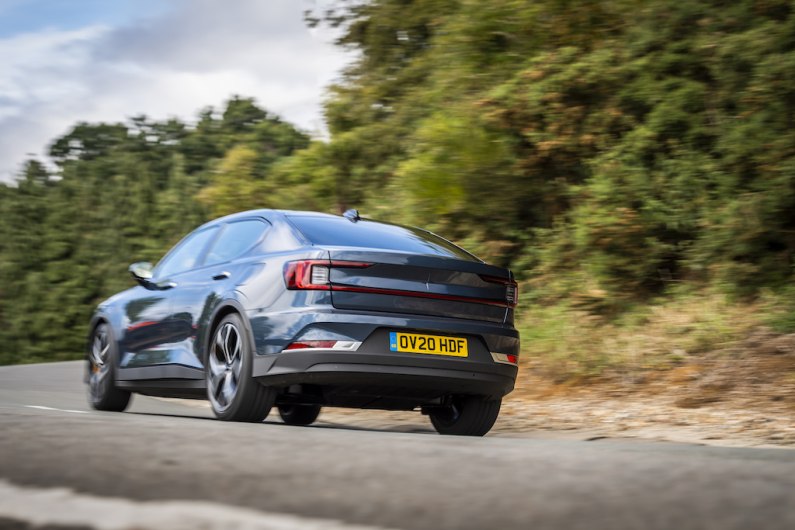
That said, if you want all-round speed and a bit more agility and purpose from the steering, then the Tesla Model 3 is still the car to go for. It weighs significantly less, and that’s noticeable, and there really is nothing like that drag-strip acceleration.
Verdict
The Polestar 2 Performance and Tesla Model 3 Performance are naturally enemies on paper: both EVs, both saloon-shaped, both around the £55K mark. But it’s interesting that Polestar hasn’t entered a performance numbers game against Tesla, pricing the Polestar 2 to go head-to-head with the Model 3 but focussing on the things the Tesla lacks: solid build quality and sophisticated design. It’s as if it has identified a market for drivers who want a practical and fast EV but reject the Americanism of the Tesla. And it might be right. While nothing will change the minds of the Teslarati, the Polestar 2 offers something significantly different enough to square up against the Model 3 without being laughed out of the ring.
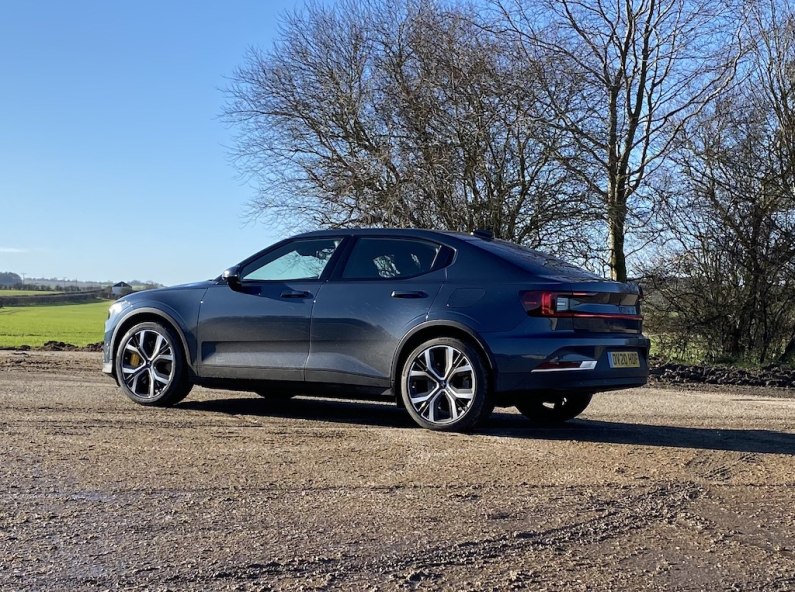
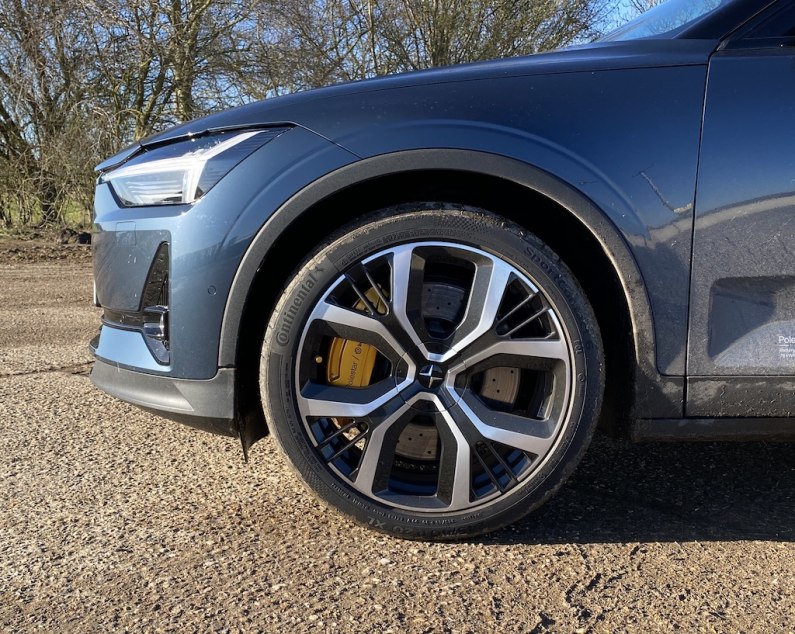
It’s a sophisticated car which still offers brisk performance and a comfortable range. Does every EV owner want a sub-4 seconds 0-62mph time? Definitely not, and if it means driving something which they can feel is as much a statement about their taste as it is a comfortable and fast zero-emissions car, they will. The Polestar 2 isn’t without its faults, but nor is the Tesla Model 3, and what we’re looking at with these two cars is the very best mid-priced electric saloons money can buy…for now.
Model tested: Polestar 2 Performance pack
Price as tested: £55,800
Battery: 78kWh
Power: 408bhp
0-62mph: 4.7 seconds
Top speed: 127mph
Range: 292 miles
